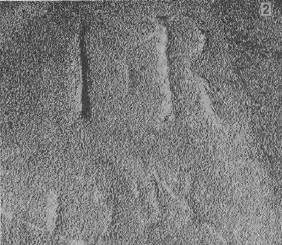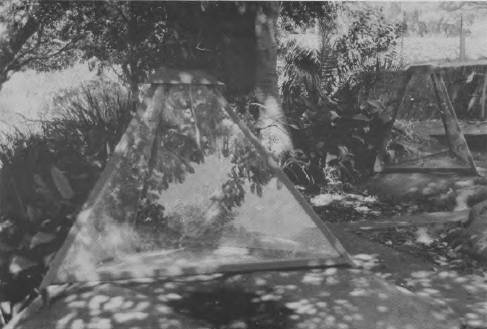- Author
- Rivett, Norman C
- Subjects
- History - pre-Federation
- Tags
-
- RAN Ships
- None noted.
- Publication
- June 1993 edition of the Naval Historical Review (all rights reserved)
Any survey party operating in the Colony during the early years required protection. The SIRIUS carried two detachments of marines. One, comprising an Officer and twenty marines, was borne by SIRIUS, the other was a supernumerary detachment of an Officer and twenty marines intended for garrison duty.
Included in this supernumerary detachment were two marines whose names corresponded to the initials “JR” or “IR”, but which one was the rock carver?
Fortunately I did not have to decide, it had been determined for me in 1787.

It is not generally realised the extent of interchange of personnel which occurred during the voyage of the First Fleet. Very conveniently for my purpose, one of these two marines was transferred to another ship at Capetown, leaving Marine Private Joseph Radford as the man most likely to have provided protection for the survey party, and to have carved the initials “IR” and the date “1788” alongside those of Frederic Meredith’s “FM” “1788”.
Why did Bradley select Radford? Being a member of the supernumerary detachment would have been the first reason, but there would have been additional considerations. He may simply have been known to Bradley as a reliable man from previous service together, a number of Officers and men would have been known to each other previously. There is no indication that Radford could read and write, but as the guard this was not so important a factor as it was for Meredith’s selection.
Radford’s record, or what is known of it, supports the belief that he was a reliable man. He joined the SIRIUS on the 20th April, 1787 from the 25th Chatham Company of Marines and served at Port Jackson with Captain-Lieutenant Watkin Tench’s company until sent to Norfolk Island on the 4th March, 1790. He returned to Port Jackson in QUEEN, November 1791, enlisting in the N.S.W. Corps as a Sergeant on the 6th April, 1792. He was granted 25 acres of land at Concord, was discharged April 1797 and married Mary Bissett on the 3rd August of the same year. He sold his land to Lieutenant Hobby in 1800 and there is no subsequent record of him.
These then are the forgotten men – perhaps not so much forgotten as simply not recognised.
In 1922 the Rev. V.W. Thompson, R.A.N., expressed his concern for the condition of these initials as follows:- “One can only express intense regret that this historic rock has not received the care it deserves. Here are probably the oldest extant marks of the first settlement in Australia. Two things that should be done I shall not cease to advocate. Firstly, that some steps be taken to prevent these marks from further weather erosion before it is too late and secondly, that an attempt be made to obtain from Records Office a list of the ship’s company of the SIRIUS during her commission in New South Wales, with a view to determining the conjecture I have put forward, and also whether the other initials fit the name of any other member of the complement of the SIRIUS”.

The second point advocated by the Chaplain has long since been complied with, it was relatively easy compared with his first recommendation which has only partially, and not too effectively, been addressed. Two glass pyramids were erected on the rocks some years ago to cover the initials, these provided protection from vandals and the direct effects of wind and rain; however, they provided no protection from seepage and surface moisture. In some respects they may even contribute to the deterioration of the engravings but this is somewhat negated by the shade provided by the foliage of the surrounding trees. Clearly something of a much more sophisticated and scientific nature is required and soon, if these foundation stones of Australia’s history as a nation are to survive to the Centenary of Federation and beyond.




